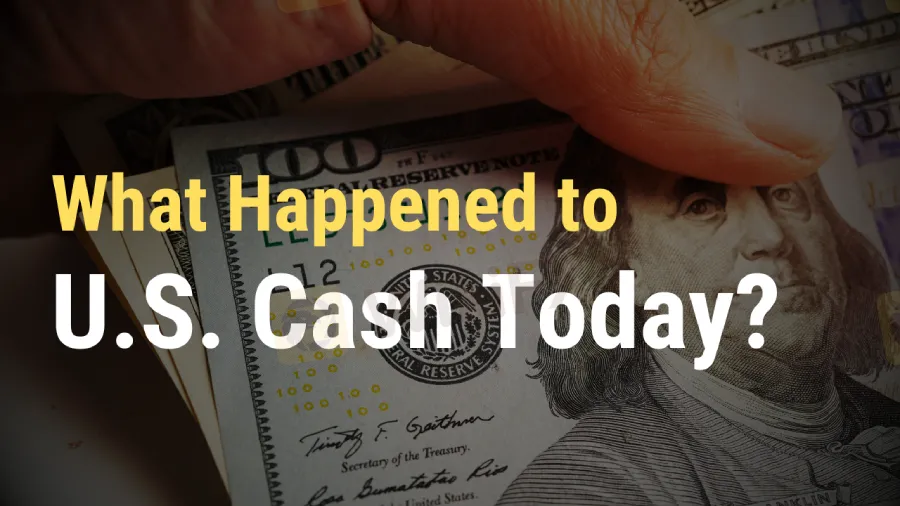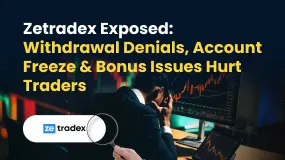简体中文
繁體中文
English
Pусский
日本語
ภาษาไทย
Tiếng Việt
Bahasa Indonesia
Español
हिन्दी
Filippiiniläinen
Français
Deutsch
Português
Türkçe
한국어
العربية
What Happened to U.S. Cash Today?
Abstract:Uncover the transformation of U.S. currency, from traditional paper notes to emerging digital forms, in this insightful article on America's monetary evolution.

The Federal Reserve intends to spend $931.4 million on printing banknotes in 2023. This statistic begs the question, “Does the US cash system need to be overhauled?” At the core of the problem is the fact that, unlike many other countries, the United States has not updated its currency. This unwillingness to change might be a major blunder.
For example, there is a rising case for the United States to replace paper currency with dollar coins. Physical money has developed globally, with several nations adopting more durable forms, such as polymer notes, which endure substantially longer than paper. However, the United States has continued to utilize conventional paper money.
This commitment to paper notes is noteworthy, particularly given that a rising number of Americans are abandoning cash in favor of electronic payments. According to Pew Research Center research, 41% of Americans did not use cash in a normal week in 2022, a considerable rise from 29% in 2018. Despite this tendency, there is more currency in circulation than ever before, and its production grows by 1.5 to 2% every year.
The present condition of US money is a complicated blend of increasing digital transactions and ongoing cash use. While the government actively participates in electronic commerce, it is still the body in charge of producing money. This dual function illustrates a distinguishing feature of the United States financial system: the coexistence of digital and physical monetary types.

The circulation of various denominations is one of the most striking indicators of the status of the US currency system. The $100 note has eclipsed the $1 bill, which was formerly the most popular. There are now 18.5 billion $100 bills in circulation, demonstrating the worldwide function of US money as a store of wealth. However, given the privacy that cash transactions provide, the adoption of greater denominations such as the $100 note raises worries about their usage for tax evasion or illicit activity.
The development of the US dollar displays intriguing historical themes. The $2 note and half-dollar coin, which were formerly widespread, have fallen out of favor in ordinary transactions, owing in part to their removal from vending machines and cash registers. Furthermore, when checks and credit card payments grew more common, the United States phased out bigger denominations such as $500 and $1000 notes.
The creation of US money is a huge undertaking. The Bureau of Engraving and Printing, which is overseen by the US Treasury, is in charge of paper notes, while the US Mint is in charge of coinage. According to the cost breakdown of generating paper bills, 28% of the cost is given to materials such as paper and ink, while 63% is dedicated to manufacturing overhead, research, and engraving. The endurance of US banknotes, constructed of a linen and cotton mix, pales in contrast to the lifetime of metal coins, which may survive up to 30 years in circulation.

Globally, there is a trend toward more durable money forms, such as smaller-value coins and polymer notes. Australia, Japan, and several European countries have adopted these developments. The United States, on the other hand, has been reticent to undertake a comparable change. Attempts to introduce $1 coins and reinstate the $2 note in the past have failed, owing primarily to popular choice and the fiscal implications of such a changeover.
The argument about the effectiveness of coinage vs paper money continues. While coins may be more durable and cost-effective in the long term, the United States has resisted this transformation for a variety of reasons, including vendor special interests and the unique qualities of the United States as a global currency player.
Concerns have also been raised about the environmental effect of printing paper notes, which often use hazardous ink for anti-counterfeiting procedures. However, there is substantial opposition in the United States to the use of dollar coins or polymer notes. This opposition may be linked in part to the Federal Reserve's policies and the larger financial environment, where digital transactions are becoming more common.
Modernizing currency is a difficult task. Banknotes are sophisticated tools, and combining technology breakthroughs such as blockchain connections might change the way we use money. However, many companies continue to accept both electronic and cash payments, and novel methods to bridge the digital-physical money divide are developing.
The argument over the future of cash continues as the United States grapples with the changing environment of money and payment systems. Should the United States follow global trends and shift to more lasting, environmentally friendly monetary forms? Or should it continue to strike a balance between digital and old payment methods? These are concerns that not only reflect economic considerations but also cultural choices and financial technology improvements.
Cash's place in American culture will surely continue to develop as a result of a mix of popular choice, technological progress, and economic reality. The transition of US currency from paper notes to possibly more contemporary forms will be an important part of this development, reflecting the changing dynamics of money in a digital age.

Disclaimer:
The views in this article only represent the author's personal views, and do not constitute investment advice on this platform. This platform does not guarantee the accuracy, completeness and timeliness of the information in the article, and will not be liable for any loss caused by the use of or reliance on the information in the article.
Read more

WikiEXPO Dubai “Welcome Party” Concludes Successfully, Setting the Stage for the Main Event!
On the evening of November 10, 2025, the highly anticipated WikiEXPO Dubai “Welcome Party” was successfully held at the 6th Floor, Conrad Dubai, UAE. Serving as a “prelude” to the official opening of the expo, this event provided a high-end yet relaxed communication platform for representatives of global regulatory bodies, leaders of Fintech companies, renowned brokers, and senior executives of investment institutions.

VARIANSE Review: Traders Raise Deposit & Withdrawal Issues and High Commission & Swap Charges
Are you losing both while depositing and withdrawing your capital at VARIANSE? Does the broker give the currency conversion rate excuse for this? Have you been trapped with spreads charged higher than promised? Do you bear steep commission and swap charges at this broker? Traders frequently report these trading issues online. In today’s VARIANSE broker review, we have shared some trading complaints that have grabbed everyone’s attention. Take a look.

Zetradex Exposed: Withdrawal Denials, Account Freeze & Bonus Issues Hurt Traders
Do you constantly face withdrawal denials by Zetradex? Does the forex broker keep freezing your account and wiping out your capital? Have you also undergone issues concerning the Zetradex no deposit bonus? These trading issues have become apparent as the forex broker allegedly scams traders all over. In this Zetradex review article, we have demonstrated some complaints. Read them to get a feel of what happens to traders here.

Fullerton Markets Review: Traders Allege Profit Wipes and Illegitimate Withdrawal Rates
Have you witnessed constant profit deletion from Fullerton Markets? Has the Saint Vincent and the Grenadines-based forex broker wiped out all your capital after you checked it on Fullerton Markets Login? Do you find the deposit and withdrawal rates abnormal here? These complaints have been grabbing everyone’s attention on Fullerton Markets Review Platforms. In this article, we have shared some of these complaints for you to look at and inspect. Read on!
WikiFX Broker
Latest News
BASF CEO: EU CO₂ Trading Is A "Destruction Mechanism" For European Industry
Is Fyntura a Regulated Broker? A Complete 2025 Broker Review
Zetradex Exposed: Withdrawal Denials, Account Freeze & Bonus Issues Hurt Traders
Is Forex Zone Trading Regulated and Licensed?
PINAKINE Broker India Review 2025: A Complete Guide to Safety and Services
Exness Restricted Countries List 2025 Explained
Is Uniglobe Markets Legit? A 2025 Simple Guide to Its Safety, Services, and User Warnings
Is Inzo Broker Safe or a Scam? An Evidence-Based Analysis for Traders
WikiEXPO Dubai 2025 “Welcome Party” Kicks Off Tonight!
He Trusted a WhatsApp Group and Lost RM659,000
Currency Calculator



